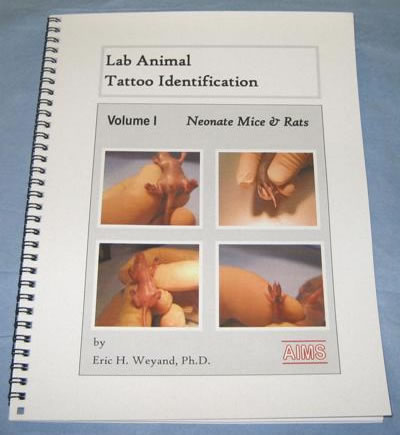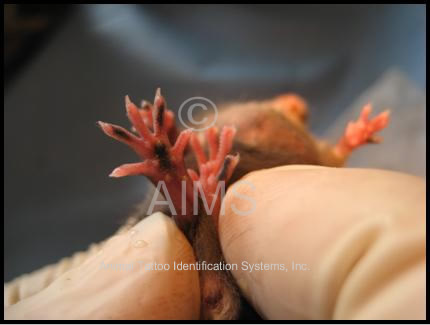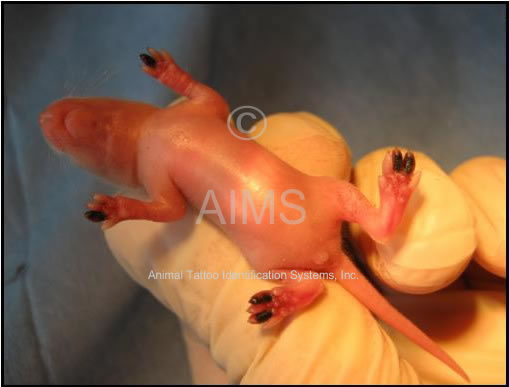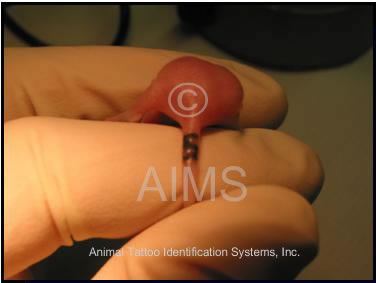NEO-9 Neonate Rodent Tattooing System
neonate tattooing made simple & quick
The AIMS NEO-9 Neonate Tattoo System was developed for the tattoo identification of P0 – P15 neonate rodents of any color or strain. Neonate tattooing provides a permanent ID that can be used to identify animals as early as the first-day-of-life (P0). This is particularly useful when studying the effects of lethal genes. In addition, neonate tattooing allows genotyping at an early age to determine the number of transgenic pups in litters prior to weaning. Knowing the genotypes of animals as pups allows you to remove non-transgenic animals prior to weaning which can decreased your per diem costs and speed up your research experiments.
The NEO-9 tattoo equipment is heavy duty and built exclusively for the laboratory environment and neonate tattooing. Equipment set-up, use and care is reviewed in the Equipment Operating Instruction book while the AIMS exclusive tattooing training manual “Lab Animal Tattoo Identification, Vol.1, Neonate Mice and Rats” provides Step-by-Step guidance on developing good and humane neonate tattooing techniques.
Neonate Tattooing
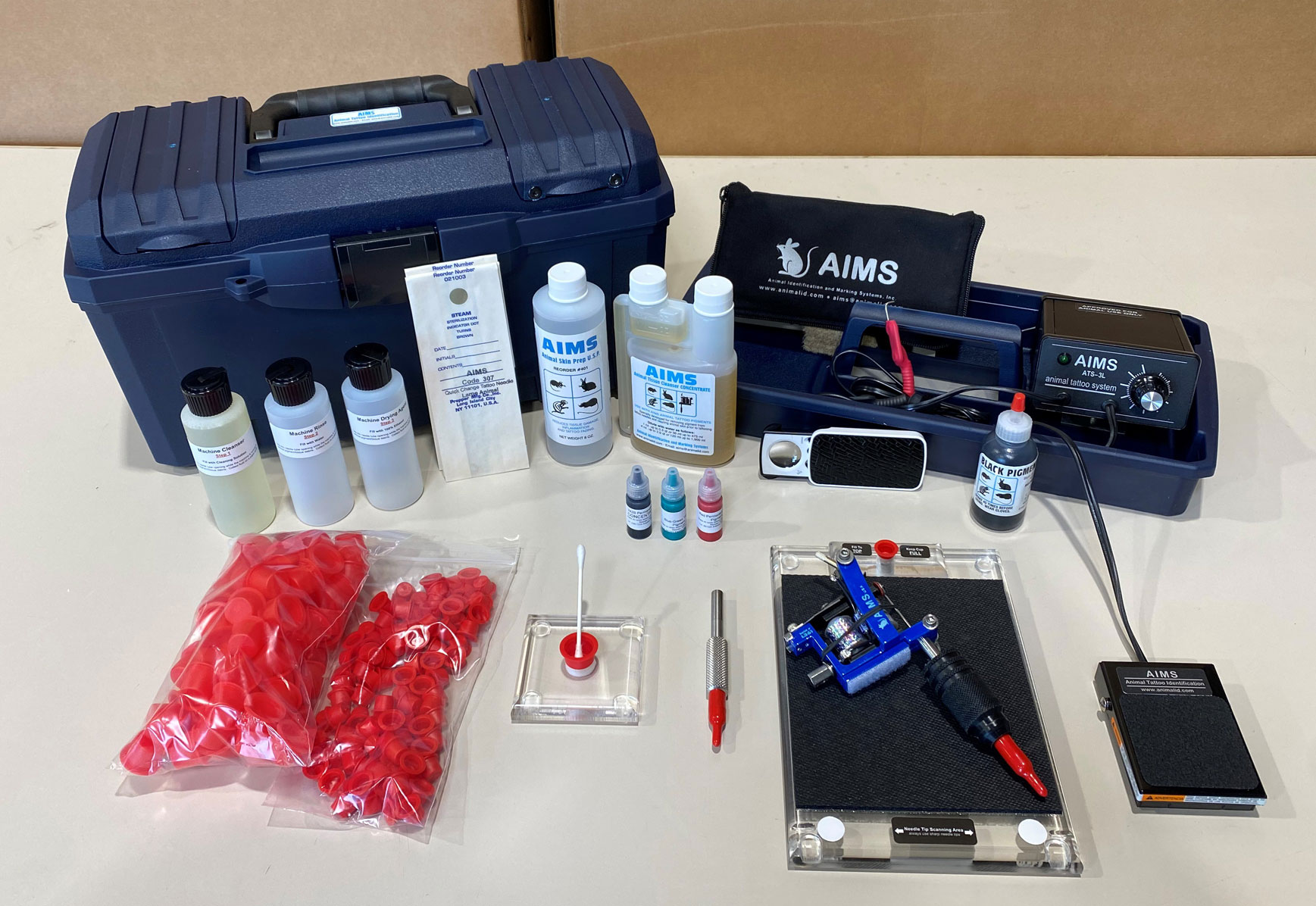
Ideal for managing transgenic colonies viable alternative to toe clipping
Key Features of the NEO-9 tattoo system:
- Tattoo P0 – P15 mice/rats
- Tattoo sites include toes, paw pads, leg shanks, and tail
- Tattoo any color neonate
- AIMS Proprietary tattoo pigments and supplies are safe and non-toxic
- Various pigment colors available
- No anesthesia needed during tattooing
- Micro tattooing station with LED and Magnifier
- Tattoo markings are permanent
- Tattooing is very quick and easy (reduces animal stress)
- No adverse effects on animal physiology
- Low supply costs
- Detailed equipment and tattooing instructions
- Multiple ID schemes provided
- UI, CE, globally approved Universal Power Supply
- 100-220V, 50-60Hz input (works in any country)
- RoHS Compliant

